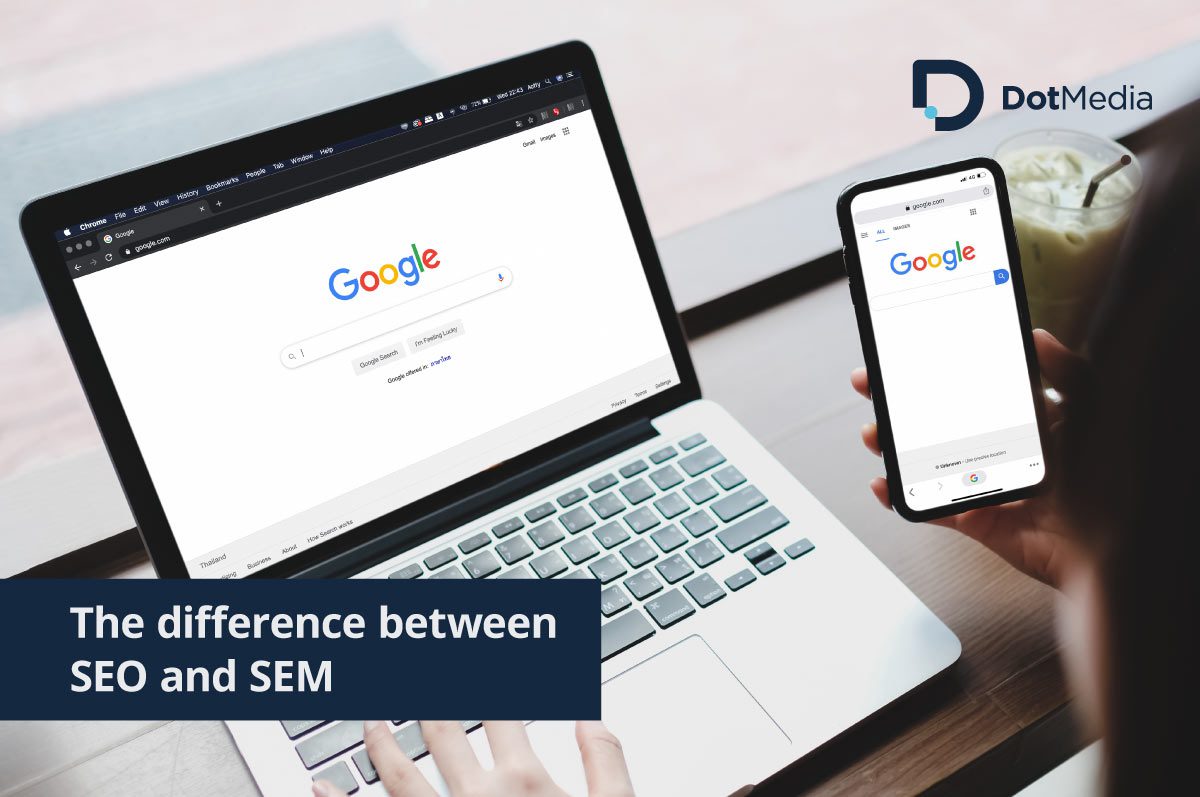The difference between SEO and SEM
Are you confused about the terms SEO and SEM? Do they sound like two sides of the same coin to you? Well, fear not! In today’s digital world, these two terms are often used interchangeably but have significant differences that every marketer should know. If you want to improve your website’s visibility and attract more traffic, it’s essential to understand the contrast between SEO and SEM. So sit back and read on as we break down everything you need to know about these critical digital marketing concepts!
What is SEO?
SEO is important when creating a website, as it can provide many benefits. One should always remember that there are potential risks associated with hiring an SEO specialist, and one should thoroughly research the pros and cons before making a decision. It is also beneficial to know what services a professional can offer, such as:
Review of your site content or structure
Technical advice on website development: for example, hosting, redirects, error pages, use of JavaScript
Content development
Management of online business development campaigns
Keyword research
SEO training
Expertise in specific markets and geographies.
What is SEM?
Search engine marketing (SEM) involves paying for advertising to enhance your visibility on search engine results pages (SERPs). This is done through paid listings, which appear in the Sponsored Links section of the SERPs. Paid listings are a form of SEM that allows you to buy your way to the top of the SERP for certain keywords.
Conversely, SEO is a long-term strategy that focuses on improving your website’s organic ranking in the SERPs. This is done by optimising your website’s content and structure, as well as building backlinks from high-quality websites.
SEO vs SEM: What’s the Difference?
There are a lot of misconceptions about the difference between SEO and SEM. The main difference is that SEM is a paid marketing strategy, while SEO is a free marketing strategy.
SEO involves optimising a website to boost its search engine visibility and organic results on Google. This strategy seeks to improve the website’s ranking.. SEM, on the other hand, is a paid marketing strategy that includes pay-per-click (PPC) advertising, cost-per-click (CPC) bidding, and display advertising.
The difference between SEO and SEM is that SEO doesn’t incur a cost while SEM does.. However, both strategies are important for any business that wants to improve its online visibility.
The Benefits of SEO
Optimising a website for Google search to increase web traffic and enhance its visibility is known as SEO. SEM is marketing a website through paid advertising on Google search results pages (SERPs).
While both SEO and SEM are important parts of online marketing, they serve different purposes. SEO is focused on organic or unpaid search results, while SEM is focused on paid search results.
SEO can benefit any website looking to earn higher web traffic levels and improve its visibility in Google searches. However, because it relies on organic or unpaid search results, it can take longer to see SEO results than SEM results.
SEM can be beneficial for websites looking for immediate visibility in Google searches through paid advertising. Paid advertising on Google can be an effective way to reach potential customers who are actively searching for your product or service. However, because it relies on paid search results, it can be more expensive than SEO and may not be sustainable in the long term.
The Benefits of SEM
SEM is an effective way to drive traffic to your website, and it can be a valuable tool for promoting your business. Here are some of the benefits of SEM:
-SEM can help you reach a wider audience than you would with SEO alone.
-SEM is a great way to promote your brand and build awareness for your business.
-SEM can help you generate leads and sales for your business.
-SEM is an affordable way to market your business, and it can be a very effective marketing strategy.
-SEM can help you track and measure your marketing results to see what’s working and what’s not.
Pros and cons of each
SEO and SEM are two digital marketing strategies that can be used to help improve a website’s visibility and organic search results. In addition, both SEO and SEM can be used to help drive traffic to a website, but they work in different ways.
SEO is focused on improving a website’s ranking in organic search results, while SEM is focused on paid advertising placements in search engine results pages.
SEO can take longer to show results than SEM, but it is a more sustainable long-term strategy. On the other hand, SEM can provide quick results, but it is often more expensive than SEO and the results may not be as lasting.
Both SEO and SEM can be effective strategies for driving traffic to a website. The best approach for a business will depend on its budget, resources, and goals.
Which is right for your business?
SEO and SEM are digital marketing strategies businesses can use to increase their visibility online and reach more potential customers. But which one is right for your business?
SEO (search engine optimisation) is a process of optimising your website and its content to rank higher in search engine results pages (SERPs). This can be done through on-page optimisation, such as keyword research and adding relevant keywords to your website content. SEO also involves off-page optimisation, such as building backlinks from high-quality websites.
SEM (search engine marketing) is a form of paid advertising that allows you to place ads on SERPs. These ads can be in the form of text, images, or videos. SEM also includes other forms of paid marketing, such as pay-per-click (PPC) advertising and cost-per-impression (CPM) advertising.
So, which one is right for your business? SEO is the way to go if you want to achieve long-term organic growth. However, if you need quick results or want to supplement your SEO efforts with another marketing channel, then SEM could be the right choice for you.
How to Use SEO and SEM Together
SEO and SEM are often used interchangeably but denote different concepts. SEO (search engine optimisation) involves optimising a website to increase its visibility in Google search results naturally, thus leading to higher levels of web traffic. Whereas, SEM (search engine marketing) is an online marketing process which seeks to promote websites by increasing their visibility through paid advertising.
While both SEO and SEM are important for driving traffic to a website, they should be used together in order to get the most benefit. Here are some tips for using both SEO and SEM together:
1. Use keyword research to find the right keywords to target for both SEO and SEM.
2. Optimise your website for those keywords using on-page SEO techniques.
3. Create compelling ad copy and landing pages that are optimised for conversion.
4. Use pay-per-click advertising to drive traffic to your website while you work on building up your organic search rankings.
5. Monitor your progress and adjust your strategies as needed based on what’s working and what’s not.
Conclusion
SEO and SEM are two essential components of digital advertising. These strategies help to increase visibility so customers can find your business more easily online.. As marketers, it is our job to use these tools in the most effective ways possible to reach our target audiences. SEO focuses on organic search engine placement while SEM involves paid campaigns requiring budget and human resources. Although both strategies have their own unique strengths and weaknesses, when used together they can be highly successful for any business looking to increase its online presence.
SEO and SEM are both powerful tools to help you achieve success online. However, SEO is a long-term strategy that requires patience, research and dedication in order to see results. On the other hand, SEM is a short-term strategy that can bring quick traffic and conversions if done correctly. Both strategies have their own merits and should be approached with clear goals in mind. In conclusion, understanding the difference between SEO and SEM will help you make more informed decisions when optimising your website for maximum visibility on search engines.





